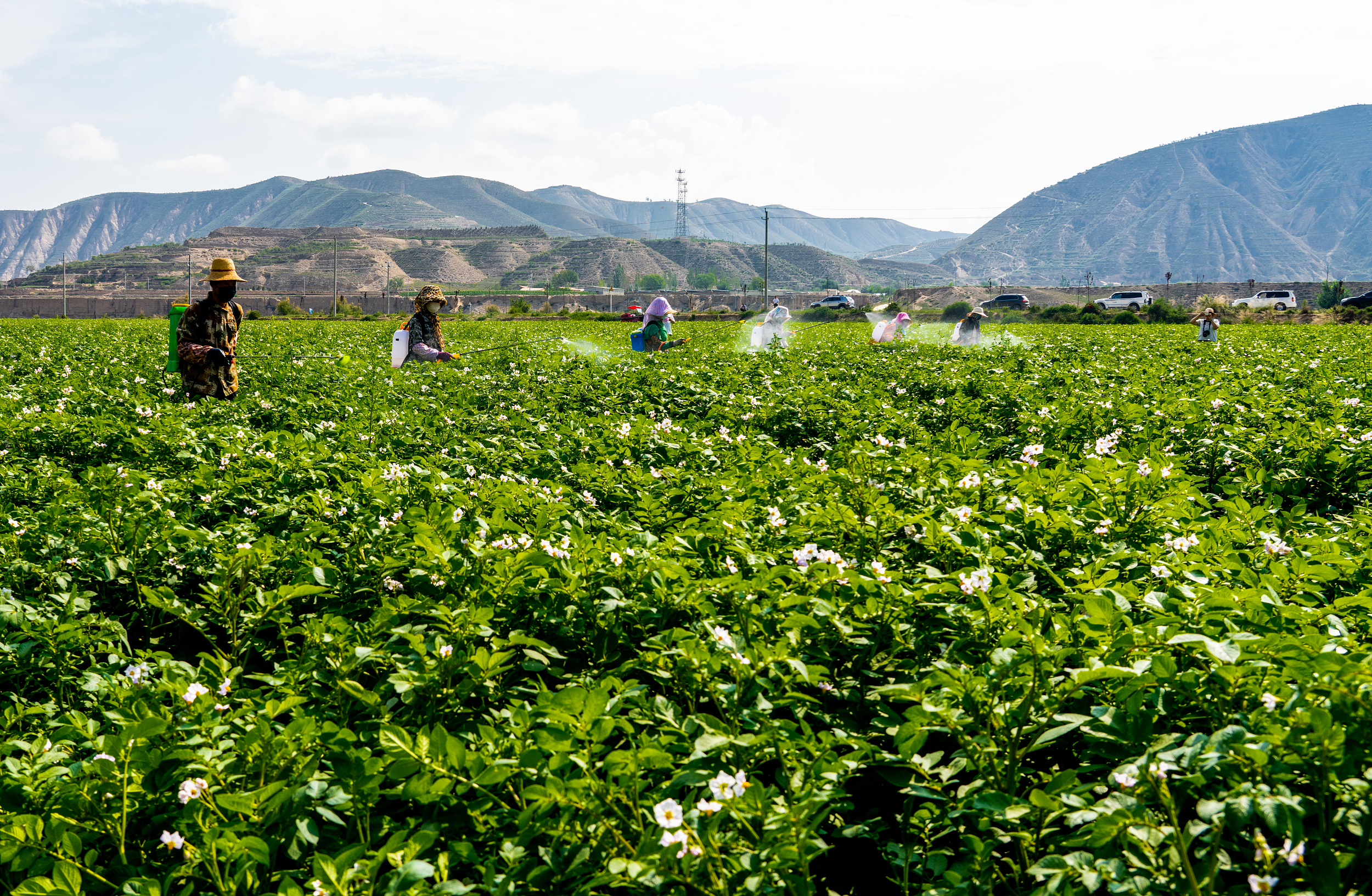Technology Takes Gansu's Agriculture Industry to Next Level

By XIE Manbin & ZHONG Jianli
August is a fruitful season for northwest China's Gansu province, where the development of the agriculture industry is thriving.
In the past 10 years, Gansu has fully employed modern technology, tapped the potential of its resources, and developed a modern agriculture that can cope with cold and drought, which has played a major role in lifting the province out of poverty.
Potatoes, the "golden eggs"
By optimizing the modern seed potato production system of "basic seedlings — virus-free seedlings — virus-free original seed (basic seed) — original seed — first-class seed," Gansu Ailan Potato Seed Industry Co., Ltd. continues to expand the industrial chain, improve the seed potato production infrastructure and increase its production capacity.
The company's development is indispensable to its cooperation with related research institutions, including the Potato Research Institute of Gansu Academy of Agricultural Sciences.
The Institute, together with a number of organizations, implemented the project of "Mechanized Production Demonstration of New Staple Food Varieties of Potatoes in Anding District."
Wen Guohong, a researcher at the Institute, introduced that this potato project highlighted the application of supporting technology for new staple food varieties called Longshu No.7 and Longshu No.10. The demonstration and promotion of the varieties was completed in 2016, with a planting area of 16,798 mu (1120 hectares). The average yield is 2,241.8 kilograms of potatoes per mu, which helped increase farmers' income by 10.78 million RMB.
At present, Gansu has developed into an important seed potato base, commodity potato base and processing base in the country. In 2021, Gansu's potato planting area and output reached 10.2 million mu (680,000 hectares) and 15 million tons respectively, ranking among the top tier in the country.
Seed corn in Hexi Corridor
In the northwest of Gansu, there is a long and narrow flat land called Hexi Corridor, where the seed industry is well-developed. The corn seeds produced here can meet more than half of the country's needs.
"Corn will still be one of the main food crops in China in the future," said Hou Suiwen, dean of the School of Life Sciences of Lanzhou University, adding that producers and the market will need the most resistant and widely suitable, medium and early maturing, and high and stable yielding varieties. He believes that to solve these problems, the improvement of the quality and efficiency of corn germplasm is imminent.
After years of R&D, his team has established a new way of precise molecular breeding of corn, created new germplasm resources, and solved the technical problems of grain crop breeding in Gansu.
With this technical support, corn breeding and seed production in Gansu is developing optimally. In 2021, the corn seed production area reached 1.41 million mu (94,000 hectares), producing 579 million kilograms of seeds, which accounted for 57.8 percent of the country's total corn seed output.
It is expected by 2025, that the output value of the entire industrial chain of corn breeding and seed production in Gansu should reach more than 12 billion RMB.






